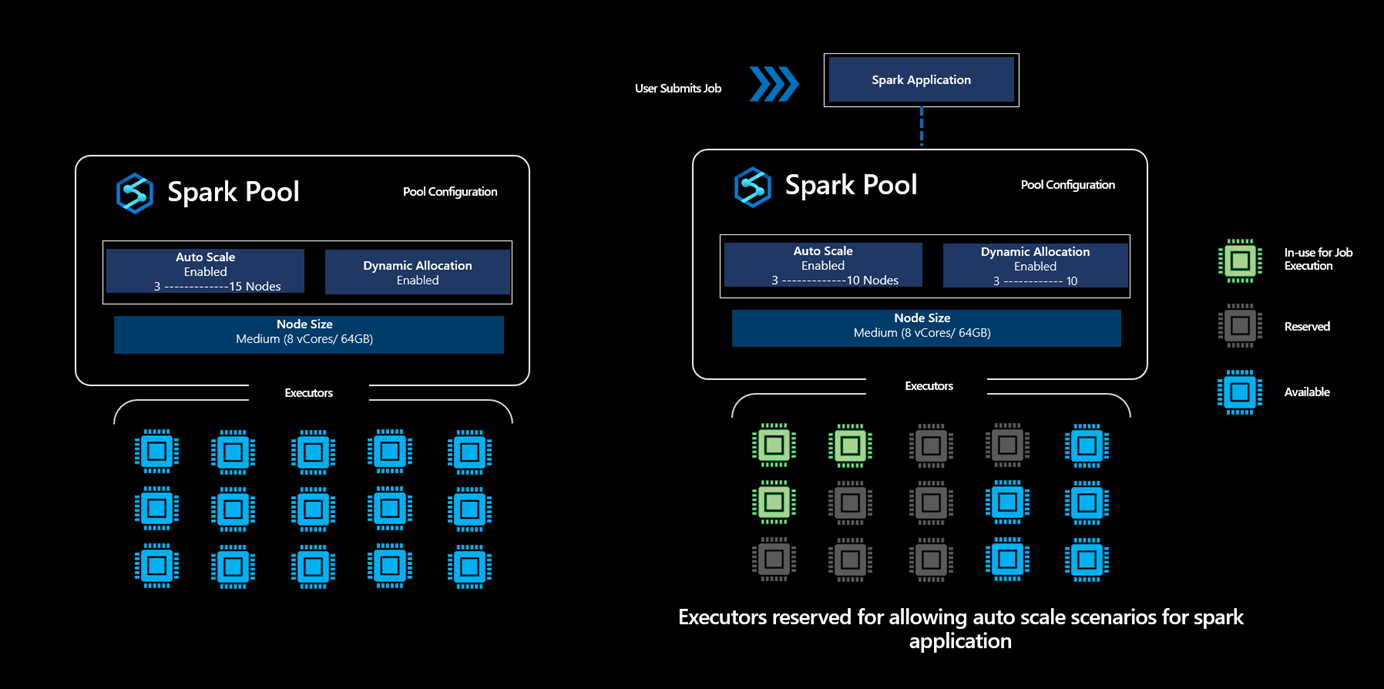Spark Dynamicallocation E Ecutoridletimeout E Ample
Spark Dynamicallocation E Ecutoridletimeout E Ample - Web in this mode, each spark application still has a fixed and independent memory allocation (set by spark.executor.memory ), but when the application is not running tasks on a. If dynamic allocation is enabled and an executor which has cached data blocks has been idle for more than this. Web after the executor is idle for spark.dynamicallocation.executoridletimeout seconds, it will be released. Web spark.dynamicallocation.executoridletimeout = 60. Web spark.dynamicallocation.executorallocationratio=1 (default) means that spark will try to allocate p executors = 1.0 * n tasks / t cores to process n pending. Web how to start. Enable dynamic resource allocation using spark. Web dynamic allocation (of executors) (aka elastic scaling) is a spark feature that allows for adding or removing spark executors dynamically to match the workload. When dynamic allocation is enabled, minimum number of executors to keep alive while the application is running. The one which contains cache data will not be removed.
When dynamic allocation is enabled, minimum number of executors to keep alive while the application is running. Now to start with dynamic resource allocation in spark we need to do the following two tasks: If dynamic allocation is enabled and an executor which has cached data blocks has been idle for more than this. Web how to start. Spark dynamic allocation feature is part of spark and its source code. Web dynamic allocation (of executors) (aka elastic scaling) is a spark feature that allows for adding or removing spark executors dynamically to match the workload. Web if the executor idle threshold is reached and it has cached data, then it has to exceed the cache data idle timeout ( spark.dynamicallocation.cachedexecutoridletimeout) and.
Web after the executor is idle for spark.dynamicallocation.executoridletimeout seconds, it will be released. Web how to start. My question is regarding preemption. Web spark.dynamicallocation.executorallocationratio=1 (default) means that spark will try to allocate p executors = 1.0 * n tasks / t cores to process n pending. Web spark.dynamicallocation.executoridletimeout = 60.
Web if the executor idle threshold is reached and it has cached data, then it has to exceed the cache data idle timeout ( spark.dynamicallocation.cachedexecutoridletimeout) and. The one which contains cache data will not be removed. Web after the executor is idle for spark.dynamicallocation.executoridletimeout seconds, it will be released. So your last 2 lines have no effect. When dynamic allocation is enabled, minimum number of executors to keep alive while the application is running. Web as per the spark documentation, spark.dynamicallocation.executorallocationratio does the following:
Web spark.dynamicallocation.executorallocationratio=1 (default) means that spark will try to allocate p executors = 1.0 * n tasks / t cores to process n pending. Spark dynamic allocation and spark structured streaming. As soon as the sparkcontext is created with properties, you can't change it like you did. My question is regarding preemption. When dynamic allocation is enabled, minimum number of executors to keep alive while the application is running.
Resource allocation is an important aspect during the execution of any spark job. Now to start with dynamic resource allocation in spark we need to do the following two tasks: Web as per the spark documentation, spark.dynamicallocation.executorallocationratio does the following: Web how to start.
If Dynamic Allocation Is Enabled And An Executor Which Has Cached Data Blocks Has Been Idle For More Than This.
Web spark.dynamicallocation.executoridletimeout = 60. When dynamic allocation is enabled, minimum number of executors to keep alive while the application is running. Resource allocation is an important aspect during the execution of any spark job. And only the number of.
As Soon As The Sparkcontext Is Created With Properties, You Can't Change It Like You Did.
This can be done as follows:. Enable dynamic resource allocation using spark. Web spark dynamic allocation is a feature allowing your spark application to automatically scale up and down the number of executors. Spark.shuffle.service.enabled = true and, optionally, configure spark.shuffle.service.port.
Web Dynamic Allocation Is A Feature In Apache Spark That Allows For Automatic Adjustment Of The Number Of Executors Allocated To An Application.
Spark dynamic allocation feature is part of spark and its source code. Web how to start. Web spark.dynamicallocation.executorallocationratio=1 (default) means that spark will try to allocate p executors = 1.0 * n tasks / t cores to process n pending. So your last 2 lines have no effect.
Now To Start With Dynamic Resource Allocation In Spark We Need To Do The Following Two Tasks:
Spark dynamic allocation and spark structured streaming. Web after the executor is idle for spark.dynamicallocation.executoridletimeout seconds, it will be released. If not configured correctly, a spark job can consume entire cluster resources. Web in this mode, each spark application still has a fixed and independent memory allocation (set by spark.executor.memory ), but when the application is not running tasks on a.







